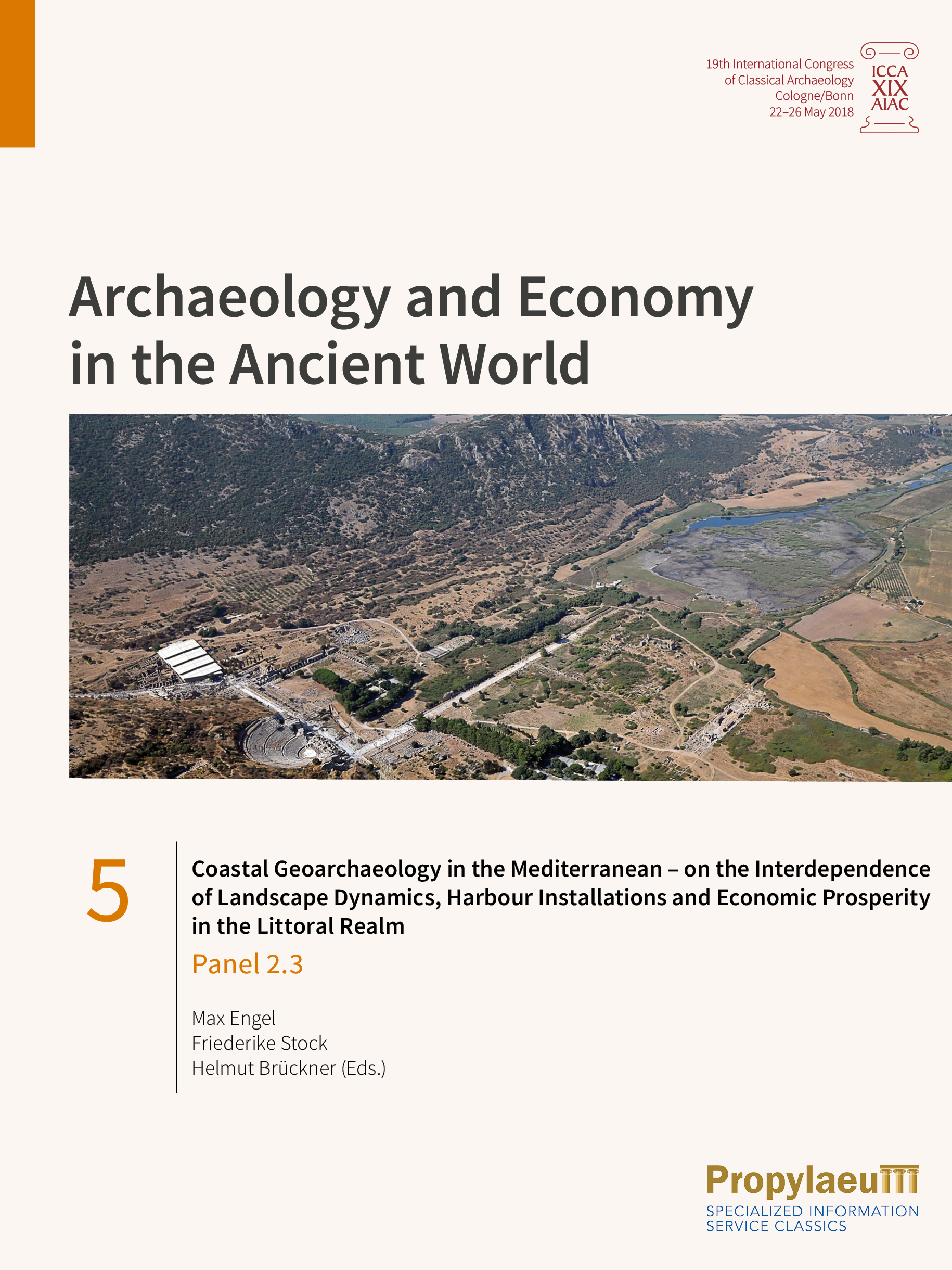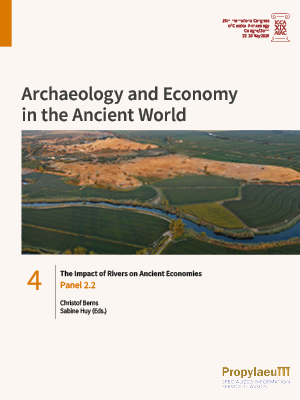Brückner, Helmut
Coastal Geoarchaeology in the Mediterranean – on the Interdependence of Landscape Dynamics, Harbour Installations and Economic Prosperity in the Littoral Realm: Panel 2.3
Die Küsten des Mittelmeers sind hochdynamische Landschaftbereiche, die sich innerhalb der vergangenen etwa sechs Jahrtausende im Fall progradierender Deltaebenen um bis zu mehrere Zehner Kilometer lateral verschoben haben. Dieser Prozess führte zur Gefährdung zahlreicher antiker Hafenanlagen und schließlich auch zu deren Trennung von der Küste, was schwerwiegende politische und ökonomische Folgen für die städtischen Zentren und ihr Hinterland mit sich brachte. Gleichzeitig führte der Anstieg des relativen Meeresspiegels stellenweise zur Versalzung von Grundwasserleitern und demnach zu nachteiligen Auswirkungen auf die landwirtschaftliche Produktion. Diese Sammlung an Beiträgen des Panel 2.3 „Coastal geoarchaeology in the Mediterranean – on the interdependence of landscape dynamics, harbour installations and economic prosperity in the littoral realm“ behandelt diese Themen für verschiedene B+ereiche des Mittelmeerraums in den letzten 2500 Jahren. Die dargestellten Studien zeigen erfolgreich, wie geowissenschaftliche Daten entweder zur Lokalisierung von Häfen beitragen oder wie sie die Interpretation archäologischer Überreste und Literaturquellen antiker Autoren maßgeblich unterstützen. Jeder Beitrag ist insofern ein eindrucksvolles Beispiel für die Relevanz interdisziplinärer Ansätze in der Archäologie, wie sie im Konzept der Geoarchäologie zusammengefasst sind.
The Impact of Rivers on Ancient Economies: Panel 2.2
Das gewachsene Forschungsinteresse an den Verflechtungen von soziokulturellen und physischen Räumen hat u. a. dazu geführt, Wasserläufe als gestaltende Faktoren von Gesellschaften und ihren Wirtschaftssystemen wahrzunehmen. Flusslandschaften weisen spezifische Bedingungen auf, die das Leben von Menschen vielfach beeinflusst haben. Flüsse bieten als natürliche Ressourcen besondere Möglichkeiten für wirtschaftliche Aktivitäten. Sie können beispielsweise sowohl als Verbindungsadern als auch als Grenzlinien fungieren. Die Beiträge unseres Panels beschreiben Flüsse als dynamische Faktoren antiker Lebenswelten. Die Aufsätze dieses Bandes konzentrieren sich auf die Wechselbeziehung zwischen Flusslandschaften und den wirtschaftlichen Gewohnheiten ihrer Bewohner. Die Fallstudien decken ein breites zeitliches wie geographisches Spektrum ab und diskutieren Phänomene wie geomorphe und anthropogene Veränderungen von Flüssen, die Rolle von Flüssen als Transport- und Handelswege und ihre Auswirkungen auf Siedlungsmuster.








